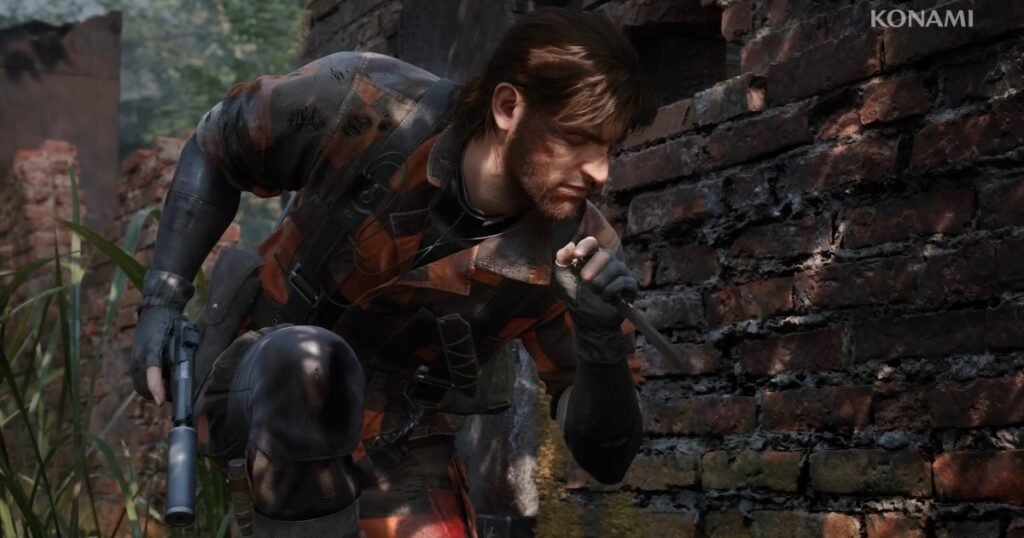Metal Gear Solid Delta: Snake Eater
MSRP $69.99
“Metal Gear Solid Delta: Snake Eater is a faithful remake that is too afraid of its own legacy to take any risks.”
Pros
- New visuals are top-notch
- Modern controls are smooth and intuitive
- Perfectly faithful remake
Cons
- Doesn’t smooth over clunky design
- Loading screens break the immersion
Metal Gear has always put its themes front and center. Whether it be breaking free from one’s own fate, memes, war, legacy, and so much more, each game has remained relevant for presenting universal themes beneath its stealth-action gameplay and sometimes goofy antics. Metal Gear Solid 3: Snake Eater‘s main theme was legacy, and that remains true for the new Konami remake renamed Metal Gear Solid Delta: Snake Eater, but for very different reasons.
With series visionary and creator Hideo Kojima out of the picture, Konami chose the route of a shot-for-shot remake with almost no creative liberties. This ensures that it cannot fall short of what fans expect, but also prevents it from achieving anything greater for itself beyond slicker graphics and more accessible controls.
There’s value in a game whose only goal is to preserve the legacy of what came before for a new audience, but it feels done more out of fear of failing to live up to Kojima’s legacy than taking any risk to improve the experience. The visuals and control scheme make this easily the best way to experience Metal Gear Solid 3, and that core game more than holds up on its own, but it’s hard not to see the missed potential to go beyond honoring its legacy.
Bring the legend back to life
We knew going into Metal Gear Solid Delta that the plot would remain untouched. That would necessarily be the case when we learned that the game would reuse all the original voice lines and music tracks, which set this remake on a very specific track. From a purist perspective, this means that there was no risk of upsetting the community with new line-reads or a new cast stepping in for the original actors, as well as no way to fundamentally change the core plot.
it doesn’t need any updating to still feel poignant.
Coming at Metal Gear Solid Delta without having played the original, but having gleaned all the plot details through osmosis over the years, I was able to appreciate the deeply political and philosophical take on war, a soldier’s duty, perspective, and what it means to live up to the legacy of a name. While the commentary on soldiers and war isn’t as directly relevant in today’s social climate, it doesn’t need any updating to still feel poignant. Part of that is the safety that comes with being a period piece, but also sticking to broader themes that aren’t tied to any particular time. The theme that does feel more relevant than ever, though, is legacy.

The external forces in Metal Gear Solid Delta are pushing Snake to not only defeat his mentor, The Boss, but also surpass her and become Big Boss. I could almost feel his struggle to live up to that legendary status mirrored in the development team living in the shadow of Kojima’s legacy. However, while Snake’s grappling with his identity eventually leads to him surpassing his mentor by rejecting all outside influence, Metal Gear Solid Delta itself is perfectly content in being exactly what is expected of it.
Kojima’s fingerprints (and name) are all over Metal Gear Solid Delta
As resonant as the game’s serious themes are, there are a few quirks of the past that remain. Snake oogling Eva’s body at nearly every opportunity, for example, feels a bit anachronistic today. It’s nothing quite on the level of Quiet’s “breathe through her skin” controversy in Metal Gear Solid V, but things like that do stick out as relics of the time.
Kojima’s fingerprints (and name) are all over Metal Gear Solid Delta despite him not being involved in the remake at all, for good and for ill. Metal Gear Solid Delta is about as perfect a remake as I think fans could want, but that kind of adherence gives the game a ceiling it can’t go beyond.
Remember the basics of CQC
The only unmistakable aspect of Metal Gear Solid Delta: Snake Eater that sets it apart from the original is the graphical facelift. MGS 3 was a looker on the PS2 for its time, but Delta brings new life to the Soviet jungles. Even within the constraints of keeping all the locations and layouts the same, the new visuals create a strong sense of place and grounds the experience even in its most goofy moments.
Snake, The Boss, Eva, and the entire cast’s original performances get a little extra oomph now that their character models can emote on the same level as the performers.
Delta brings new life to the jungles of Russia.
Delta offers two control methods: a more modern system and a Legacy option that recreates the feel of the original with fixed camera angles, tank controls, the works. I opted for the modern system and easily slipped into Snake’s shoes. It isn’t as fluid as MGS V, but the game is designed around being just a little clunky. It felt appropriately challenging to learn Snake’s limitations and utilize his tools to solve problems.
Snake is appropriately weighty, and each action is done deliberately. There’s a small learning curve there, but I never felt like I was making any concessions with the game not allowing me to do something I wanted to. Part of that is the limited technology of the time forcing me to rely on simple gadgets and my own intuition rather than looking at vision cones and patrol paths on a map. Nothing about the gameplay makes it feel like I am playing a game from 2004.

What makes Delta feel so modern wasn’t the new controls or visuals, but something that didn’t need to be changed at all. MGS games have always strived for a level of authenticity in how the world reacts to the player. If something logically makes sense in the scenario I was in with the tools at my disposal, there’s a good chance it will work. That’s held over from the original and keeps the game from feeling as dated as many games from that era tend to.
hitting loading screens, no matter how brief, every few minutes kept me from fully immersing myself
One aspect that the remake wasn’t so wise to hold so tightly to is the segmented maps. In that effort to be as faithful as possible to the original, the team decided to keep the game divided up into small zones with loading screens between each. Unlike Resident Evil‘s door transitions, there’s no thematic or narrative reason to break up the world in this way. In fact, it cuts the tension off at the knees when I hit a loading screen after getting spotted and have that awkward period before the guards catch up. In an ideal world, this could’ve been kept for the Legacy mode and the maps all stitched together more seamlessly for modern players.
A seamless world would also make the survival aspects and engagement with the world feel more cohesive. Despite how new and shiny the game looks and feels, frequent loading screens, no matter how brief, disrupt the immersion.
Metal Gear Solid Delta: Snake Eater manages to live up to its own legacy thanks to the forward-thinking design of the original, but takes no risks beyond a more approachable control scheme. It is because Kojima pushed the limits of interactivity and stuck to timeless themes in his writing that even a copy-pasted version of it is still effective over 20 years later, though with a few embarrassing relics of the past. In that way, the legacy of the original is perfectly preserved here. But it does raise the question of whether or not we even needed it. For a game all about forging one’s own identity in the shadow of another, it feels almost contradictory for the game itself to reject that notion and be as painfully accurate to the original as possible rather than strive for something greater.
Metal Gear Solid Delta: Snake Eater was tested on the PS5.


